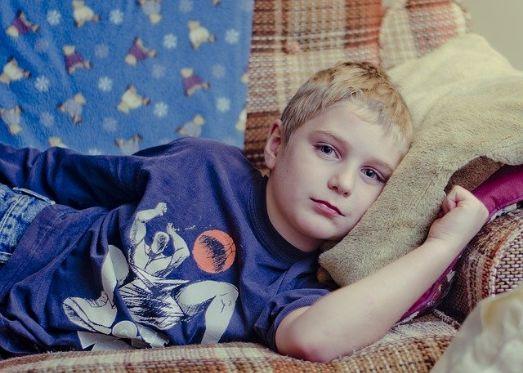
Published on: 11/09/20
Natalie Martlew and Katy Rodgers from The Children’s Trust talk about concussion in a piece in Enable Magazine.

Published on: 11/09/20
In a piece in Enable Magazine, the authors discuss the short and long term impact it can have on children and families.
Each year, 1.4 million people attend emergency departments (ED) in England and Wales with a recent head injury; between 33 per cent and 50 per cent of these are children aged 15 years or younger (NICE guidelines 2014).
Of the large number of head injury presentations to ED, 90 per cent of injuries are considered to be mild.
Concussions, or a mild traumatic brain injury (mTBI), can be the result of a blow to the head, or an instant that causes the brain to move back and forth in different directions too quickly.
Regular causes are falls, sport injuries and road traffic collisions. Evidence suggests that children and in particular teenagers are more likely to experience a concussion than adults.
Younger children are at an increased risk of concussion because their heads are disproportionately larger compared to the rest of their bodies, making them prone to falling.
There is no common term currently being used to describe such injuries and the terms concussion and mTBI are used interchangeably. The term concussion may be used because it is less alarming; with the intent of implying that the injury has no significant long-term health consequences.
This is true for the majority of those who sustain a concussion, however, a minority of individuals (up to a third) report symptoms persisting beyond six months.
Symptoms of concussion include headaches, difficulty with concentration and memory and ‘brain tiredness’ – commonly referred to as cognitive fatigue.
Sometimes there are no immediate signs of concussion. However, symptoms can occasionally appear a few hours or days after the injury.
Therefore it is important to ensure that all adults caring for a child who may have obtained a head injury are aware of recent accidents; and to look out for any warning signs in the days following the accident.
Carefully planning a child’s return to school and activity is essential to optimise brain recovery.
Reintegration into activities, both academically and socially, before the brain has had time to recover can increase the risk of sustaining another concussion and delay fully recovering from the original injury.
Whilst the majority of children and young people recover within six weeks, some go on to develop what is often referred to as post-concussion syndrome (PCS).
PCS can cause difficulties to persist for much longer. This has the potential to cause a significant impact for the child and their family, and although symptoms do eventually resolve, on-going symptoms can affect mood, behaviour and family dynamics.
Persistent fatigue or headaches can also make it harder for children to transition back to full-time education. This could then have financial implications if families are unable to go to work alongside having an effect on the child’s academic achievement and social integration.
The potential effects of concussion are often poorly understood and commonly referred to as an invisible injury.
This is due to symptoms being difficult to spot; often leading to support not being implemented thus resulting in reduced participation at home, school and in the community.
Furthermore, families are often not given adequate information regarding the possible severity of concussion and are then not prepared – or able – to manage the severity of symptoms that could occur.
Failing to address symptoms early may have a knock on effect on a child’s social and emotional wellbeing, in turn causing an increased risk of social isolation, depression and poor academic achievement.
It is often thought that this lack of understanding becomes a major contributing factor to the length of time it takes to recover, therefore it is imperative early intervention and support is in place.
Further information about concussion can be found in this free booklet, ‘Concussion in children and young people: a guide for families, teachers and sports coaches’.
This article was first published in the August/September 2020 edition of Enable magazine.